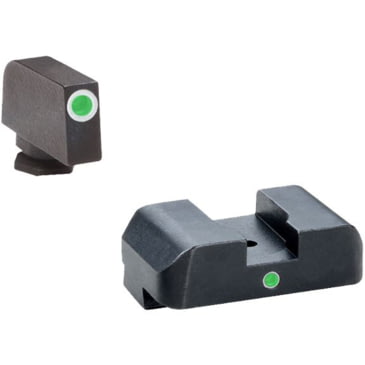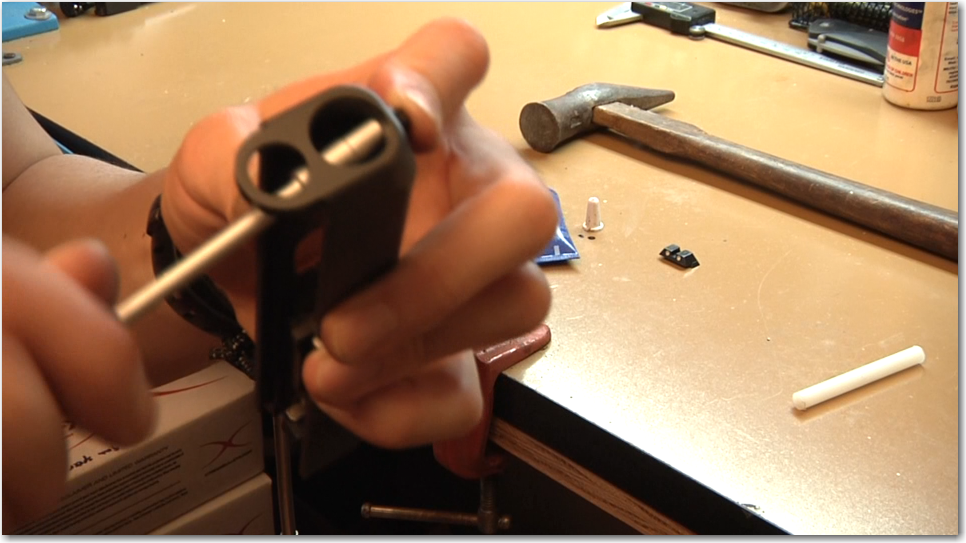

2-dot sights - 2-dot sights feature one big dot on the front sight and one small dot on the rear sight beneath the notch.It’s one of the most popular designs among handguns and is good for both short- and long-range shooting. Night sight variations will often have dots that are centered with tritium inserts. 3-dot sights - These sight setups feature one dot on the front sight and two on the rear.Choosing between sight setups largely comes down to your use case and personal preference. There are several different sight setups for shooters to choose from these days, with some of the most common stylings listed below. Fiber-optic sights, in particular, are popular among most competitive shooters these days, but personal preference varies widely. Range sights are designed to facilitate pinpoint accuracy for long-range shooting. Likewise, sights that are accurate at long distances aren’t necessary. Night sights are recommended, but they don’t need to be top of the line, particularly if you have multiple home defense weapons.

You are looking for something that performs similarly to sights you would use for everyday carry, but durability is less important. This is because weapons used strictly for home defense are usually stored in a drawer or a closet and are rarely used. It may sound counterintuitive, but I don’t think you need to break the bank getting sights for a home-defense gun. Tritium night sights are a good option because they can still be seen clearly at night, when most home invasions take place. Under these circumstances, making a pin-sized grouping isn’t as important as getting shots off on target as quickly as possible. Most gunfights happen at 3 yards, last under 3 seconds, and involve 3 rounds. For everyday carry, you also want sights that are quick on target and facilitate "tactical accuracy" rather than "bullseye accuracy". Focus on quality and durable construction. Sights that are used for your everyday carry firearm are what you want to spend the most money on. Finding the Right Sights for Your Use Caseīefore getting to the best Glock sights, there's a bit more to cover. Be careful not to get sights that are too wide in dimension, as they make long-distance shooting more difficult.įinally, consider getting ramped sights with smooth edges that won’t snag on your holster or clothing. The width of the front sight is also important, as it can affect your speed and accuracy dramatically. The front sight should always naturally capture your eyes’ attention.

Speaking of rear sights, make sure that the rear sights’ paint or tritium doesn't distract you from the front sight. The front sight typically should have a large dot that’s easy to focus in on and provides sufficient contrast from the rear sight. You want your sights to have a bright target point that allows for easy target acquisition, day or night. Some people find certain colors do a better job of drawing their attention to the front sight. The color you choose largely comes down to personal preference. Luminescent sights also come in different color variations. Fiber optics glow even in the sunlight, while tritium is specifically designed for nighttime. Modern fiber-optic sights create a similar effect. Alternatively, many sights use radioactive chemicals housed in durable tubing that give off a natural glow without electrical energy-tritium is most popular for this purpose. Today, you can find sights with luminescent paint that aids in target acquisition. The Glock comes with simple painted sights, but modern sights have evolved beyond this. You are also looking for a front sight that is easy to find when taking aim.

Avoid plastic sights, as they are typically not durable. So what makes a good set of sights? The first thing I would recommend is to only buy sights made from a strong metal like steel or aluminum.


 0 kommentar(er)
0 kommentar(er)
